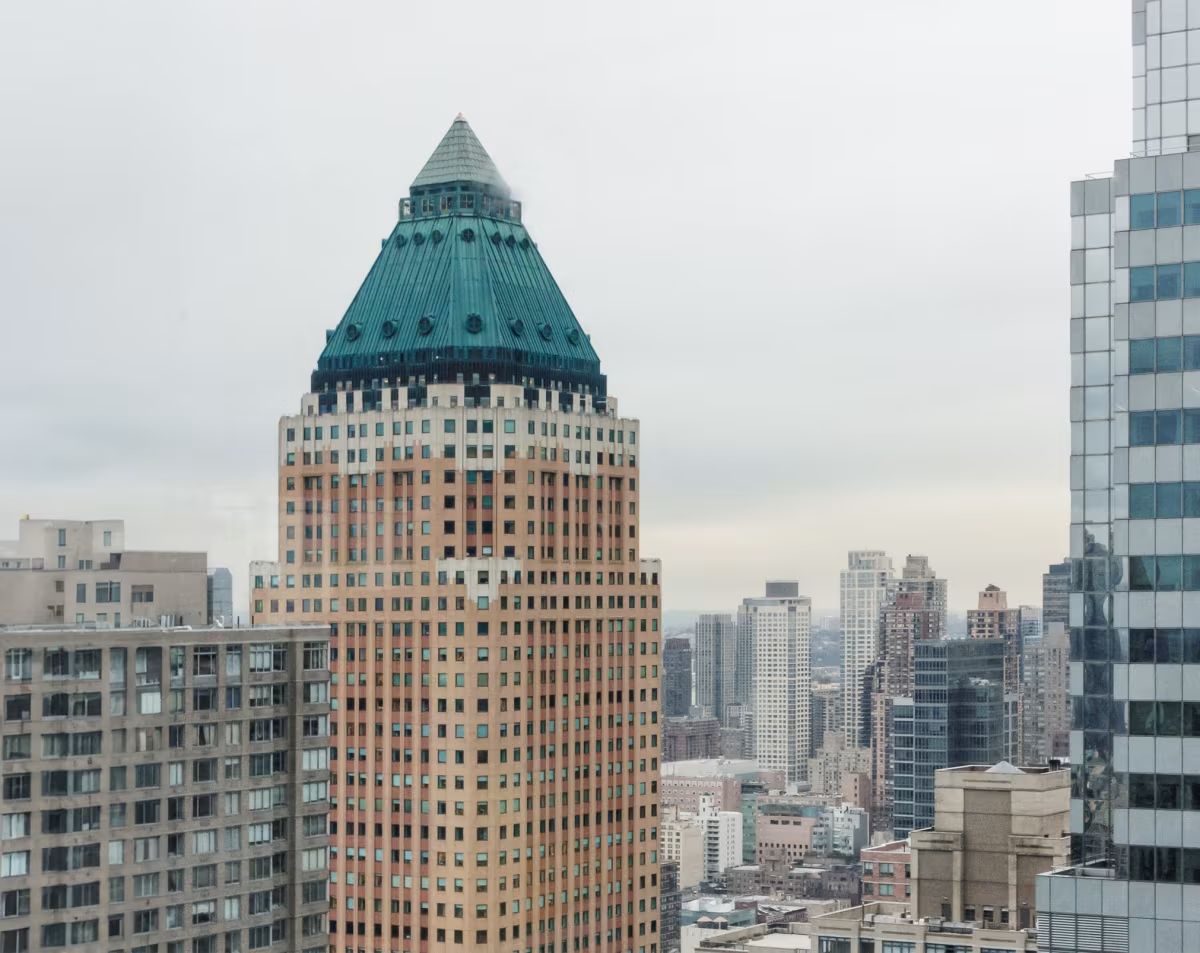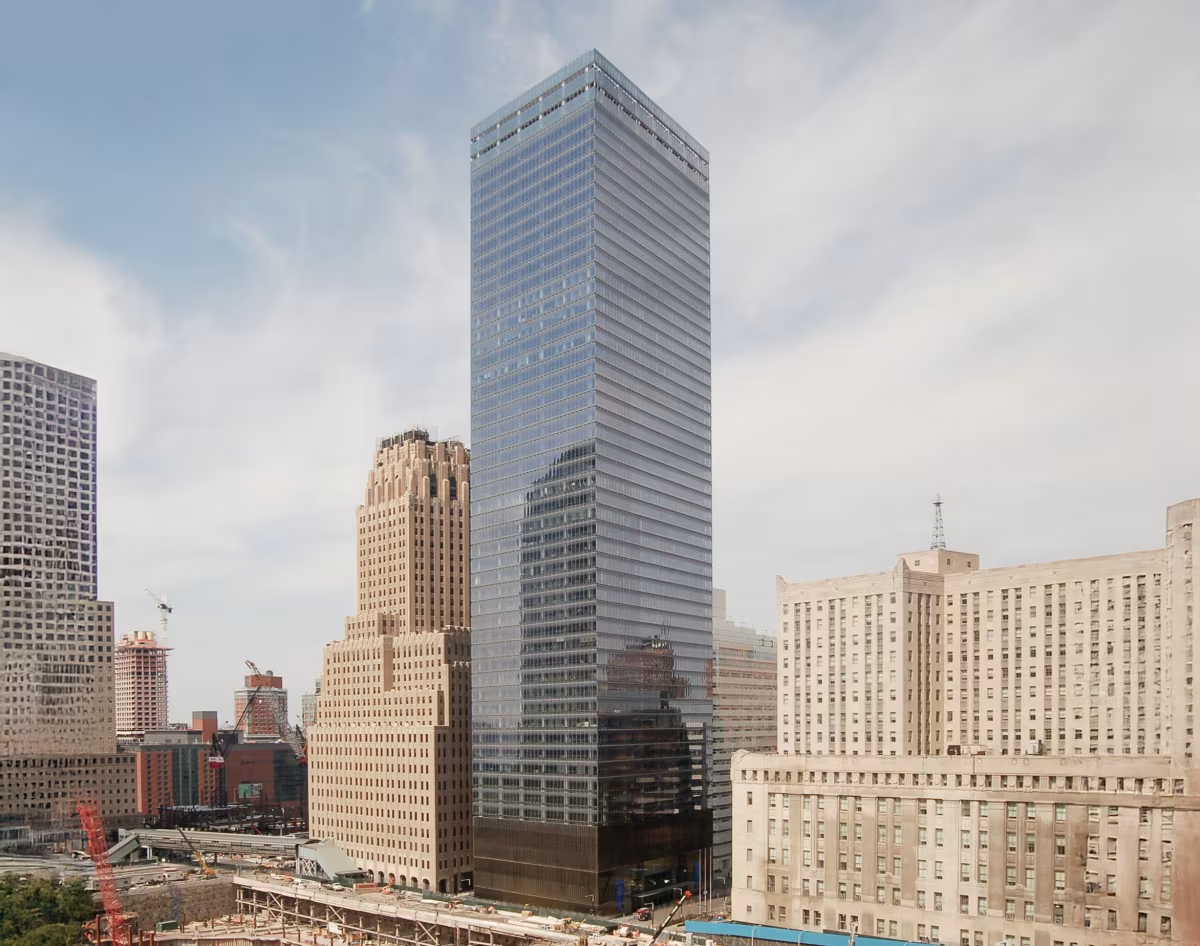One Worldwide Plaza vs 7 World Trade Center


Comparing the One Worldwide Plaza and the 7 World Trade Center is particularly interesting because they share the same skyline in New York, NY, and were both designed by Skidmore, Owings & Merrill. However, they were completed more than 17 years apart.
This offers a unique perspective on how the architect's style and the city's architecture evolved over time.
Height & Size
These two towers present an interesting contrast in their proportions. The One Worldwide Plaza rises higher at 778ft (237m), while the 7 World Trade Center reaches 741ft (226m). However, the 7 World Trade Center accommodates more floors with 51 levels above ground, compared to 47 floors in the One Worldwide Plaza.
This suggests different approaches to interior space design. The One Worldwide Plaza has an average floor-to-floor height of approximately 5m, while the 7 World Trade Center has more compact floors averaging around 4.4m each. The taller building's more generous floor heights might indicate grander interior spaces, higher ceilings, or different programmatic requirements.
These different proportions likely reflect the specific needs each building was designed to serve, whether driven by zoning regulations, client requirements, or the intended use of the spaces within. The contrast shows how architects can achieve different spatial experiences even when working with similar overall building scales.
Architectural Style
The One Worldwide Plaza was designed in the Postmodernism style, while the 7 World Trade Center reflects the principles of Contemporary.
At the time of their completion, both styles were well established. This makes the comparison especially interesting, because both buildings represent a dominant aesthetic at a particular point in time.Uses
Both the One Worldwide Plaza and the 7 World Trade Center were designed to serve as commercial towers, and that has remained their main use since their completion, serving similar roles in the urban fabric.
The One Worldwide Plaza also provides 475 parking spaces.
Structure & Facade
Both towers share the same structural solution, a Frame system.
A frame structure uses a grid of columns and beams to carry the building's loads. This frees the walls from structural duties, allowing for flexible floor plans and larger windows.
However, when it comes to the facade, both buildings use different approaches. The One Worldwide Plaza uses a Masonry facade, while the 7 World Trade Center uses a Curtain Wall facade.
A Masonry facade like the one seen in the One Worldwide Plaza features a heavy masonry skin that gives it a more clasical look, while a curtain-wall facade like the one seen in the 7 World Trade Center uses a lightweight glass curtain wall hung from the structure.
| One Worldwide Plaza | 7 World Trade Center | |
|---|---|---|
| Skidmore, Owings & Merrill | Architect | Skidmore, Owings & Merrill |
| 1986 | Construction Started | 2002 |
| 1989 | Year Completed | 2006 |
| Postmodernism | Architectural Style | Contemporary |
| Commercial | Current Use | Commercial |
| 47 | Floors Above Ground | 51 |
| 2 | Floors Below Ground | 1 |
| 237 m | Height (m) | 226 m |
| 26 | Number of Elevators | 29 |
| Frame | Structure Type | Frame |
| Steel | Vertical Structure Material | Steel |
| Steel And Reinforced Concrete | Horizontal Structure Material | Poured Concrete Over Metal Decking |
| Yes | Facade Structural? | No |
| Brick, Glass | Main Facade Material | Glass |
| HRH Construction | Main Contractor | Tishman Construction |
| William Zeckendorf Jr. | Developer | Silverstein Properties |
| Skidmore, Owings & Merrill | Structural Engineer | WSP Cantor Seinuk |
| NY | State | NY |
| New York | City | New York |
| 825 8th Avenue | Address | 250 Greenwich Street |